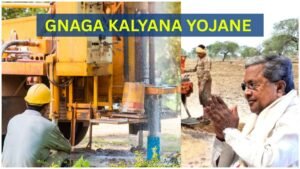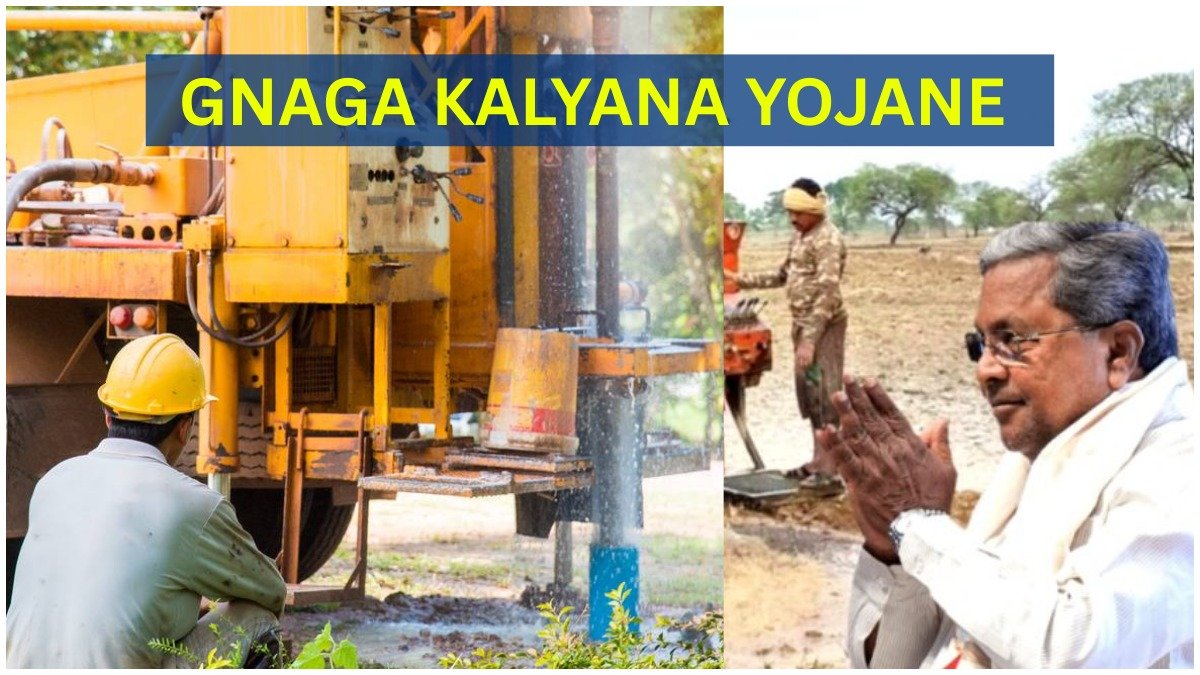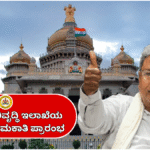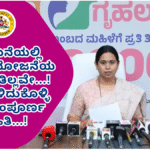Agriculture has always been the backbone of India’s economy, and in a state like Karnataka, millions of people depend on farming for their livelihood. Despite this, many farmers, particularly those from marginalized communities, continue to face serious challenges due to a lack of irrigation facilities. Rain-fed agriculture is highly risky in regions prone to drought or irregular rainfall, and without assured water supply, agricultural productivity suffers badly. To address these issues, the Government of Karnataka introduced the Ganga Kalyan Irrigation Scheme (commonly known as Ganga Kalyana Yojane).

This scheme is designed with a special focus on Scheduled Castes (SC) and Scheduled Tribes (ST) farmers who own agricultural land but are unable to utilize it effectively due to lack of irrigation. Through this initiative, the government provides financial and infrastructural support to bring water to their fields, enabling them to cultivate crops more efficiently and increase their incomes.
The Ganga Kalyan Irrigation Scheme has been a turning point for thousands of farmers across Karnataka. Below is a comprehensive explanation of the scheme, its objectives, implementation process, eligibility, and the benefits it brings to rural communities.
Objectives of the Scheme
The primary goal of the Ganga Kalyan Irrigation Scheme is to ensure that small and marginal farmers, especially those belonging to socially disadvantaged groups, have access to reliable irrigation. Its objectives can be summarized as follows:
- Provide Irrigation Facilities
Support farmers who own cultivable land but do not have sufficient water sources by providing borewells, lift irrigation systems, or small tanks. - Promote Agricultural Growth
By ensuring water availability, the scheme encourages farmers to take up multiple cropping, adopt modern farming practices, and reduce dependence on uncertain monsoon rainfall. - Improve Livelihoods of SC/ST Communities
The scheme is targeted towards Scheduled Castes and Scheduled Tribes, empowering them socially and economically by making farming more sustainable. - Reduce Poverty and Migration
By creating better income opportunities through farming, the scheme helps prevent rural distress, seasonal migration, and debt traps. - Sustainable Agricultural Development
Recent updates to the scheme also focus on eco-friendly irrigation practices, such as solar-powered pump sets, to ensure long-term benefits without overburdening natural resources.
Key Features of the Ganga Kalyan Irrigation Scheme
The scheme is unique in its approach because it not only provides financial assistance but also takes care of technical and infrastructural requirements. Some of its key features include:
- Irrigation Support: Water supply is ensured through borewell drilling, open wells, or lift irrigation projects depending on the location and feasibility.
- Beneficiary Focus: The scheme is exclusively designed for SC/ST farmers who own agricultural land but do not have irrigation facilities.
- Government Funding: The government bears the majority of the cost, including borewell drilling, installation of pump sets, pipelines, and providing electricity connections.
- Water Storage Facilities: In certain areas, the scheme also involves constructing small storage tanks, check dams, or lift systems from rivers and streams to supply water to farms.
- Individual and Group Schemes: Depending on the landholding and community needs, both individual borewell schemes and group lift irrigation projects are implemented.
Eligibility Criteria
To ensure that the scheme reaches the intended beneficiaries, specific eligibility conditions have been laid down:
- Resident of Karnataka – The applicant must be a permanent resident of the state.
- Community Requirement – Only farmers belonging to Scheduled Castes (SC) or Scheduled Tribes (ST) are eligible.
- Ownership of Agricultural Land – The farmer must possess cultivable land without existing irrigation facilities.
- Suitability of Land – The land must be agriculturally viable and located in an area where irrigation facilities can be created.
- Income Criteria – Annual family income should generally not exceed ₹3,00,000 (subject to updates by the government).
Types of Irrigation Projects under the Scheme
The Ganga Kalyan Irrigation Scheme is implemented in two main forms, depending on whether the farmer applies individually or as part of a group:
1. Individual Borewell Scheme
- Aimed at small landholders who require irrigation for their personal landholding.
- The government drills a borewell on the farmer’s land.
- A pump set, pipeline, and electricity connection are provided to make the borewell functional.
- This is most suitable for farmers who own small plots in areas where underground water is available.
2. Lift Irrigation Scheme (Group Project)
- Designed for a group of farmers living in the same locality.
- Water is lifted from a nearby river, canal, or large water body and distributed to multiple farms using pipes and pumps.
- This collective approach is beneficial in areas where groundwater is scarce or borewells are not feasible.
- Costs are higher but are fully borne by the government for eligible SC/ST farmers.
Financial Norms and Assistance
The scheme provides significant financial assistance to beneficiaries:
- Subsidy/Grant Amount:
The government provides subsidies ranging from ₹3.00 lakh to ₹5.00 lakh, depending on the area and the type of project. - 100% Grant for SC/ST Farmers:
In most cases, the cost of drilling borewells, installing pump sets, pipelines, and connecting electricity is fully covered by the government, with no repayment burden on the farmer. - Solar Pump Sets:
Recently, the scheme has also included subsidies for solar-powered irrigation systems in drought-prone areas, reducing dependence on electricity supply.
Required Documents
Applicants need to submit the following documents during the application process:
- Caste Certificate (SC/ST)
- Income Certificate
- Proof of Land Ownership (RTC, Pahani, or land records)
- Aadhaar Card
- Bank Passbook copy
- Domicile/Residence Certificate (Karnataka)
- Land Map indicating farm location
- Electricity feasibility report (if necessary)
Application Process
The application process is made simple and can be done both online and offline.
- Where to Apply:
- Karnataka Scheduled Castes and Scheduled Tribes Development Corporation
- Karnataka Adijambava Development Corporation
- District Scheduled Caste Development Corporations (DSCDCs)
- Local Gram Panchayats
- Steps Involved:
- Fill the application form and submit required documents.
- Field verification is conducted by officials to check eligibility, land suitability, and irrigation feasibility.
- Approval is given after verification, and a work order is issued.
- Borewell drilling or lift irrigation work is carried out by government-approved contractors.
- Pump sets, pipelines, and electric connections are installed.
- Finally, the irrigation system is handed over to the farmer/group for use.
- Online Tracking:
- Beneficiaries can now track the status of their application on the Seva Sindhu portal and other government websites, making the process transparent.
Organizations Implementing the Scheme
Several government bodies are involved in implementing the scheme effectively:
- Karnataka Scheduled Castes and Scheduled Tribes Development Corporation
- District Scheduled Caste Development Corporations (DSCDCs)
- Zilla Panchayats
- Department of Social Welfare
- Adijambava Development Corporation
Benefits of the Scheme
The Ganga Kalyan Irrigation Scheme has brought about transformative benefits:
- Ensures assured irrigation and reduces dependency on erratic rainfall.
- Boosts agricultural production, allowing farmers to cultivate multiple crops.
- Improves economic conditions and reduces poverty among SC/ST communities.
- Encourages farmers to adopt modern farming practices.
- Prevents seasonal migration by ensuring sustainable livelihoods.
- Promotes social equity by empowering marginalized groups.
Challenges and Limitations
Despite its success, the scheme faces several challenges:
- Groundwater Depletion – Excessive drilling of borewells has led to falling groundwater levels in many districts.
- Electricity Delays – In some cases, pump sets remain non-functional due to delays in providing electricity connections.
- Non-Viable Borewells – Some borewells fail due to insufficient underground water, resulting in wasted investments.
- Maintenance Issues – Group irrigation projects sometimes face problems with maintenance and cost-sharing among farmers.
Recent Updates (2025)
The Karnataka government has introduced several new measures to strengthen the scheme:
- Increased subsidy amounts to meet rising costs of borewell drilling and irrigation equipment.
- Introduction of solar pump sets to ensure eco-friendly irrigation in drought-hit areas.
- Online application and tracking system through Seva Sindhu for greater transparency.
- Efforts to identify suitable water sources before drilling to reduce borewell failures.
Conclusion
The Ganga Kalyan Irrigation Scheme is more than just an irrigation project—it is a lifeline for thousands of SC/ST farmers in Karnataka. By providing access to water, it enables farmers to cultivate their land effectively, improve productivity, and secure better livelihoods. While challenges such as groundwater depletion and implementation delays remain, the government’s continuous updates, introduction of solar-powered pumps, and digital tracking systems are steps in the right direction.
For marginalized farmers, this scheme has not only provided irrigation but also dignity, empowerment, and hope for a better future. With proper planning, maintenance, and sustainable practices, the Ganga Kalyan Yojane can continue to transform rural Karnataka for generations to come.











